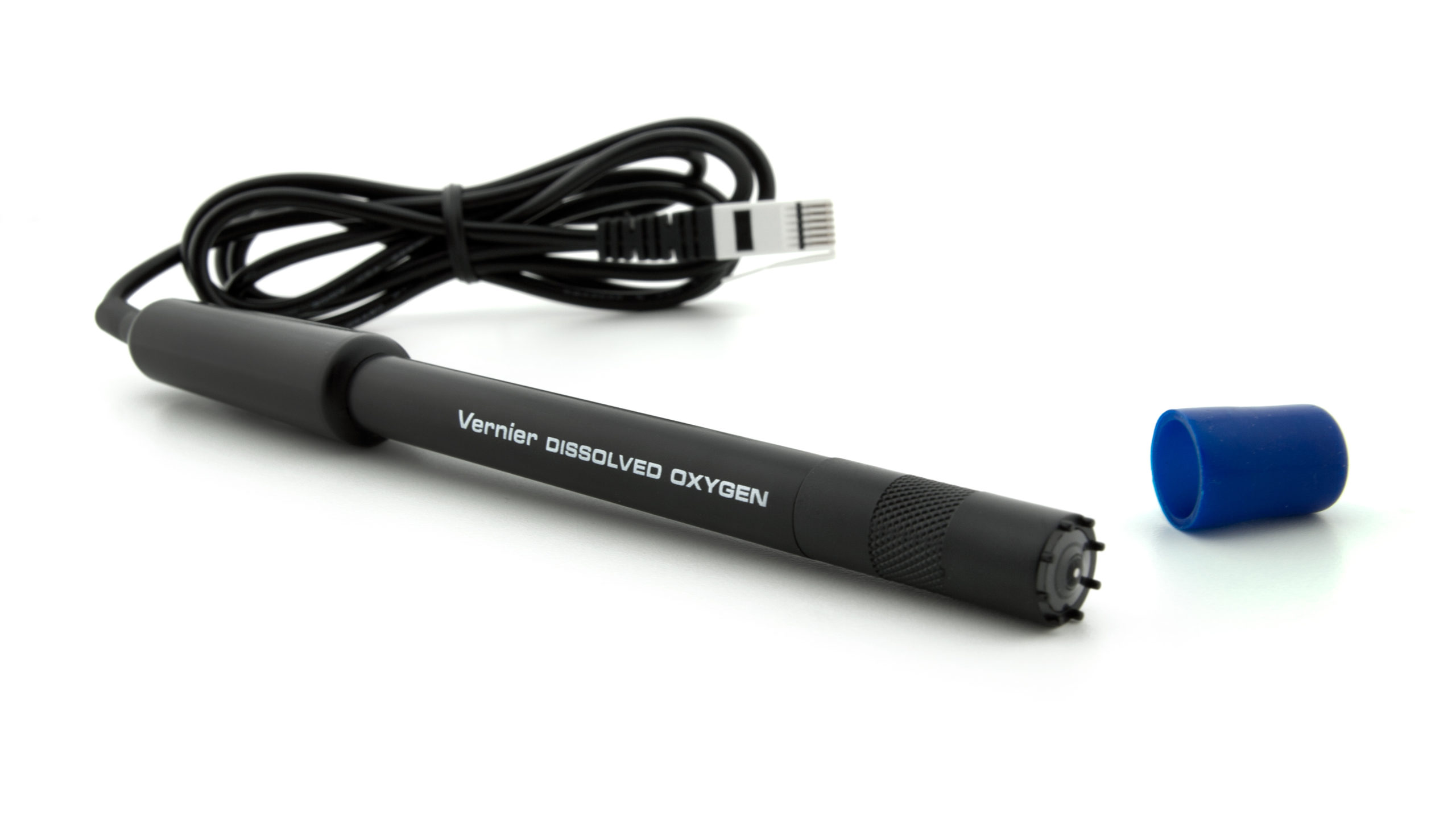This sensor is no longer available. Information is presented for reference only.
Troubleshooting
- Primary Test: If the probe is filled with the correct filling solution, the blue protective cap is removed, and it is being gently stirred in the water, the readings should be reasonable (6 mg/L to 10 mg/L is typical).
- Secondary Test: Is the DO Sensor connected to an interface with a pH, Conductivity, ISE, or Direct-Connect Temperature Probe? If so, remove the other sensors while using the DO Probe.
- Tertiary Test: If the readings are unsatisfactory, try a new membrane cap and calibrate the probe.
- Quaternary Test: Check for an air bubble inside the membrane cap.
Additional Troubleshooting
- Tips and tricks for using the Dissolved Oxygen Probe
- What is the difference between a regular Dissolved Oxygen Probe and the Optical DO Probe? Which one should I buy?
- Do any of your sensors require special storage?
- Do you sell the DO Calibration Solution (sodium sulfite)?
- What is the recipe for your Dissolved Oxygen Filling solution?
- Can I use Vernier water quality sensors in salt water or in a salt water aquarium?
- What sensors do not work with EasyLink?
- How can I provide power for my interface when used in the field for long-term data collection?
- Will I get interference when I put two sensors in the same solution?
- How many times can you use a DO membrane cap?
- DO calibration: Is the temperature on the chart the air temperature or the water temperature?
- Can I use the DO Electrode Filling Solution past its expiration date?
- How do I sterilize a Dissolved Oxygen Probe?
- How do I compensate for salinity when measuring dissolved oxygen?
Specifications
- Range: 0 to 15 mg/L (or ppm)
- Accuracy: +/-0.2 mg/L
- Typical Resolution: 0.014 mg/L
- Response time: 95% of final reading in 30 seconds, 98% in 45 seconds
- Temperature compensation: automatic from 5 to 35 deg C
- Pressure compensation: manual, accounted for during calibration
- Salinity compensation: manual, accounted for during calibration
- Minimum sample flow: 20 cm/s
- Factory calibration coefficients: slope 3.27; intercept –0.327
Calibration
Calibrate? Not always. If your experiment seeks to measure only a change in dissolved oxygen, then the stored calibration is suitable. If you plan to make discrete measurements of dissolved oxygen in a natural body of water, then calibration is recommended.
The calibration process for this sensor is lengthy. Refer to the sensor booklet for detailed instructions.
Related Products
- Membrane for DO Sensor (MEM)
- DO Calibration Solution (DO-CAL)
- DO Filling Solution, 125 mL (FS)
- DO Polishing Strips (PS)
- Sodium Sulfite, anhydrous solid (Flinn Scientific order code S0111)
- Vernier Optical DO Probe (ODO-BTA)
- Go Direct® Optical Dissolved Oxygen Probe (GDX-ODO)

